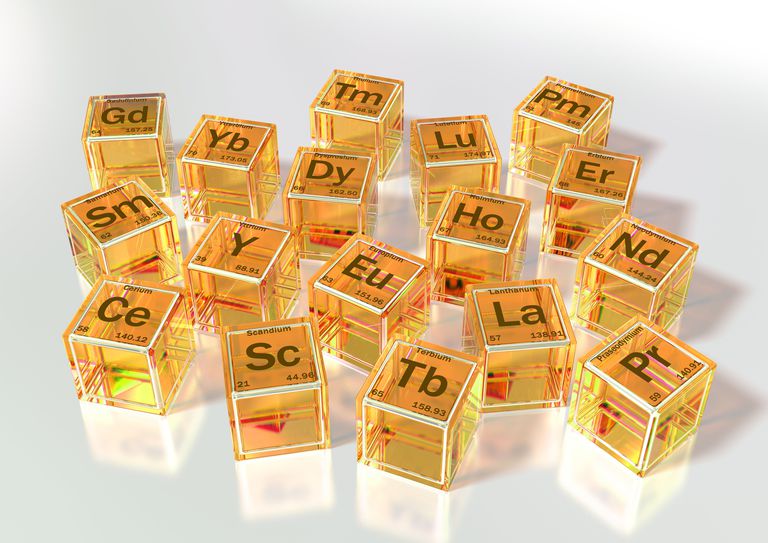Does Mongolia need rare earth elements?

Even though rare earth elements are called “rare”, they are more abundant than gold or silver in the earth’s crust. Countries around the world are crossing swords over one of a set of seventeen chemical elements in the periodic table.
Rare earth elements which are the main components of cutting-edge technologies of the 21st century are named rare as the elements are often found together and require intricate separation processes.
The processing technology for rare earth elements (REE) varies depending on the mineral content such as bastnaesite, monazite, apatite, xenotime. REE contains radioactive elements, uranium and thorium but has a wide range of applications including defense, health and even space exploration. Moreover, REEs are necessary components for our inseparable companion – phones, portable devices and electric cars.
Soaring consumption of REE is driven by industrial progress and demand for environmentally friendly technologies. Since the 1990s, China has been a dominant player in the rare earth industry producing 97 percent of the global demand but gradually losing its competitive advantage.
In 2019, China produced 130,000 tons of the total global production of REE which in total amounted to 210,000 tons. The largest manufacturing countries such as member states of the European Union, the United States and Japan have been making considerable efforts in reducing dependency on China.
In Mongolia, there are four REE deposits: Mushgai Khudag Deposit in Umnugovi Aimag, Lugiin Gol Deposit in Dornogovi Aimag, Khotgor Deposit in Umnugovi Aimag and Khalzan Buregtei Deposit in Khovd Aimag.
For instance, Lugiin Gol, Mushgai Khudag and Khotgor deposits mainly have light REEs. Demand for elements used in renewable energy, electric car and magnet manufacturing such as neodymium and praseodymium is growing. The REE deposits in Mongolia have high contents of such elements.

Yttrium is the main element found in the Khalzan Buregtei Deposit which has the largest REE reserves. A.Temuujin, the head of the Rare Earth Element Research Project Unit of Erdenes Mongol LLC, pointed out that the demand for yttrium which requires complicated processing has recently dropped.
China extracts rare earth elements during iron ore production which makes it less costly to produce. Hence, exploit niobium, tantalum and zircon from the Khalzan Buregtei Deposit and then extract REE from the waste products.
The Lugiin Gol Deposit is the most intensely studied deposit in Mongolia and has REEs with the highest content. Unfortunately, scientists claim that the deposit does not have enough reserve for production.
Mongolia is estimated to have three million tons of REE reserves. A.Khaumdas, a professor and a project consultant for the REE project at Erdenes Mongol LLC, emphasized the need for further studies on REE deposits, exploration and production experiments. To set this into motion, the Government has to closely cooperate with the private sector. However, the special licenses on those REE deposits are held by private companies who refuse to collaborate with the Government or use the license as collateral for loans. At the moment, three out of eight licenses are held by banks as collateral.
To acquire an exploration and exploitation license on REE, the project must be introduced to the National Security Council of Mongolia and approved at the Cabinet session. The reason for strict requirements is that REEs are classified as radioactive elements in the Nuclear Energy Law. Therefore, experts suggest revising the classification and related laws on REEs.
Deposits of REEs are found in only a few locations. Furthermore, REEs are exploited and processed in a few technologically advanced countries. Thus, many countries include REEs in the list of strategically important minerals.
The Rare Earth Element Research Project Unit of Erdenes Mongol LLC has submitted a proposal addressing the necessity of formulating a national policy on REEs to the Ministry of Mining and Heavy Industry. Currently, the Rare Earth Element Research Project Unit is burning the midnight oil to acquire an exploration license before 2021. This will allow them to conduct a thorough study and exploration of REEs and will open an opportunity to cooperate with foreign and domestic investors.
The demand for REEs which are globally considered as strategically important minerals keeps growing robustly. It raises a question, whether REEs are absolutely necessary for the development of Mongolia. Present and future development are inseparable from high technology. Therefore, it is time to step into the REE market so that we can ensure that Mongolia is not left behind.
